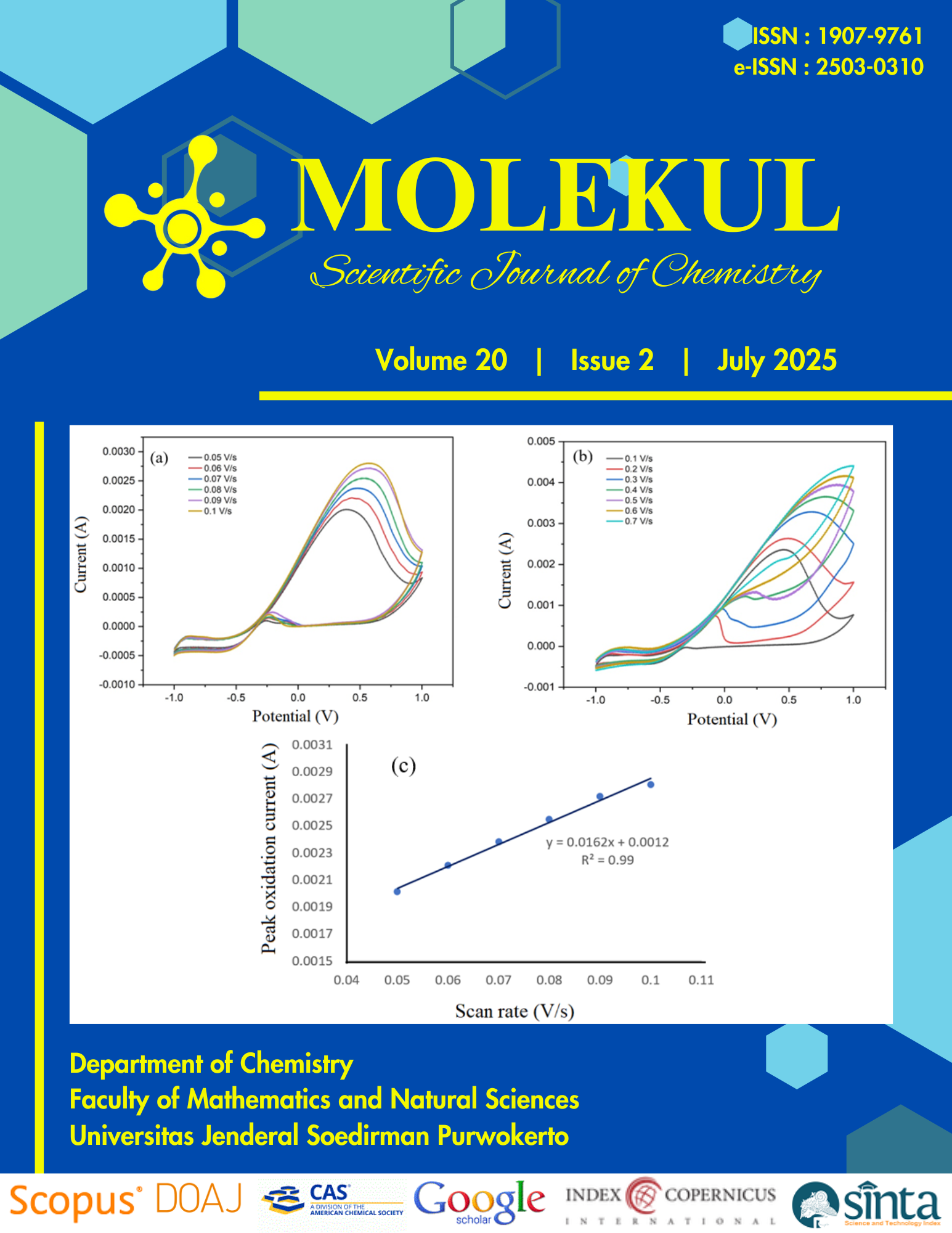Antioxidant and Antibacterial Activities of Plant and Endophytic Fungi Extracts from Syzygium myrtifolium Walp, with LC-HRMS Profiling of Active Extracts
Abstract
ABSTRACT. The emergence of antibiotic resistance and oxidative stress-related diseases highlights the urgent need for novel bioactive compounds. This study investigates the potential of Syzygium myrtifolium Walp. and its endophytic fungi as sources of antibacterial and antioxidant agents. Sixteen endophytic fungi isolates were obtained from six plant parts and identified morphologically. Thin layer chromatography (TLC)-based chemical profiling demonstrated comparable secondary metabolite patterns between the plant and its endophytic fungi, indicating possible shared biosynthetic pathways. Antibacterial screening using TLC-bioautography and minimum inhibitory concentration (MIC) assays demonstrated that both the plant and endophytic fungi extracts inhibited the growth of Staphylococcus aureus and Escherichia coli, with Xylaria sp. showing notable activity. (SmDh4) exhibiting the strongest activity (MIC = 64 µg/mL). Antioxidant activity determined using the 2,2-diphenyl-1-picrylhydrazyl (DPPH) assay indicated high to very high radical inhibition capacity, especially in SmRTd (AAI = 25.91) and SmAk1 (AAI = 24.97). Liquid chromatography-high resolution mass spectrometry (LC-HRMS) analysis unique secondary metabolites on endophytic fungi, including L-α-palmitin, α-eleostearic acid, and 8-methylnaphthalene-1,2-diol, which were detected exclusively in the endophytic fungi extracts, highlighting their potential as alternative antibacterial and antioxidant agents.
Keywords: Antibacterial, antioxidant, endophytic fungi, secondary metabolites, Syzygium myrtifolium Walp.
Authors agree with the statements below:
- Authors automatically transfer the copyright to the MOLEKUL journal and grant the journal right of first publication with the work simultaneously licensed under a Creative Commons Attribution 4.0 International License (CC BY 4.0).
- Authors are able to enter into separate permission for the non-exclusive distribution of the journal's published version of the work (e.g., post it to an institutional repository or publish it in a book), with an acknowledgment of its initial publication in this journal.













